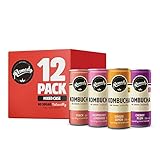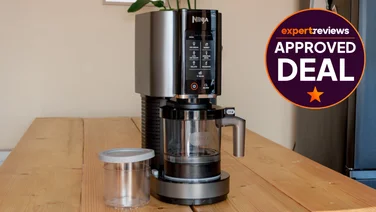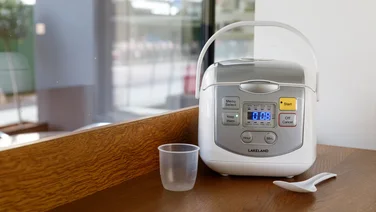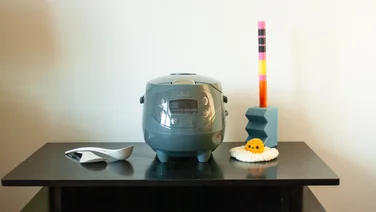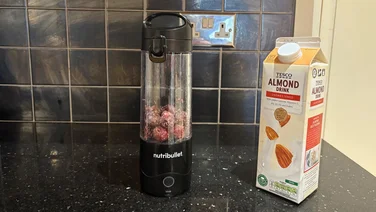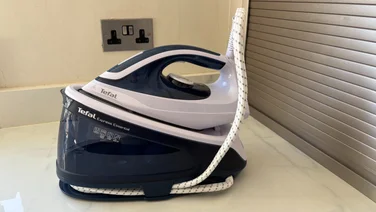To help us provide you with free impartial advice, we may earn a commission if you buy through links on our site. Learn more
- Best tea: At a glance
- How to choose the best tea for you
- How do we test tea?
- The best tea you can buy in 2024
- 1. Whittard Loose Leaf Earl Grey: Best loose leaf tea
- 2. Twinings English Breakfast Tea: Best breakfast tea
- 3. Barry’s Gold Blend: Best rich-tasting tea
- 4. Teapigs Mao Feng Green Tea Bags: Best green tea
- 5. A.Vogel Goldenrod and Knotgrass: Best herbal tea
- 6. Whittard Dreamtime Flavour: Best instant tea
- 7. Amala Chai Masala Chai Kit: Best chai
- 8. Remedy Kombucha: Best fermented tea

Not counting plain old water, tea is quite possibly the most popular drink in the world – and it’s easy to see why. The best tea can be warm or cold, invigorating, flavourful, sweet, savoury and more. While most tea drinkers in the UK will be familiar with classic varieties of black tea such as breakfast blend and Earl Grey, there’s a whole world of tea products out there beyond what we see on our supermarket shelves. From bitter, nutty green tea to instant tea in powdered form, there’s a wonderful range of varieties, methods and flavours for you to try. Tea drinking might be a national pastime, but taste-testing and brew-refining can be your personal hobby as well.
While there’s a lot to learn about tea, our simple buying guide will quickly take you through the ins and outs of the different varieties and forms, as well as brewing equipment. Below that, you’ll find our mini-reviews of our favourite teas, rounding up everything from loose leaf and bagged black tea to matcha powder and chai blends, as well as some niche tea products you might not have heard about. So read on, it’s time for a cupgrade.
Best tea: At a glance
- Best breakfast tea: Twinings English Breakfast Tea | £14
- Best loose-leaf tea: Whittard Earl Grey loose leaf | £8
- Best rich-tasting tea: Barry’s Gold Blend | £6.50
- Best green tea: Teapigs Mao Feng tea bags | £11
How to choose the best tea for you
What are the different varieties of tea?
Any product that calls itself tea usually derives from the Camellia Sinensis plant. This versatile, leafy plant can be grown, harvested, processed and brewed in many different ways. These differences produce many varieties of tea with different properties and flavours. However, the main varieties of tea you’ll recognise from supermarket shelves are black tea, green tea and herbal tea.
Black tea is what most Brits will be familiar with, as it’s the most commonly consumed tea product in the UK. Breakfast blend, Earl Grey and Darjeeling are all types of black tea. Black tea is made by harvesting tea leaves and allowing them to oxidise by exposing them to the air. During this process, the leaves lose their natural green colouring and original flavour – the resultant leaves are darker in colour, and produce a brew that can be rich, malty and slightly fruity.
READ NEXT: Our roundup of the best tea bags
Green tea originates from Japan and China, predating black tea by thousands of years. It can be produced in a variety of ways, but is generally made by harvesting tea leaves and heating them soon after to prevent oxidation. Traditionally, this heating process involves pan-firing in China and steaming in Japan. Preventing oxidation preserves the bright, green colour and natural flavour of the leaves, which can range from earthy and vegetal to nutty and slightly sweet. If you’re interested in trying green tea, why not check out our full roundup of the best green teas.
Adding herbal tea could be considered cheating when it comes to making a best tea list, but we’ve given it an honourable mention anyway. This is because herbal teas don’t usually contain any tea leaves. Instead, they rely on a range of other leaves, spices, herbs and dried fruit to deliver flavour. While they might be better classed as infusions rather than tea, as they’re so popular, we’ve still included them in our list below.
What are the different forms tea can take?
Now that we’ve briefly delineated the main types of tea, let’s take a look at the different forms and brewing methods used to make tea.
Tea bags are probably the simplest way to make your favourite cuppa and the one you’re most likely to be familiar with. For those not in the know, tea bags are porous, sealed bags that contain tea leaves and sometimes other herbs and flavourings. Steep one in hot water for two to five minutes and you’ve got your classic cup of tea.
Loose leaf tea is exactly what it sounds like. Instead of being sealed in individual bags, these tea leaves come loose in their container. Tea aficionados especially enjoy loose leaf, as the leaves tend to be larger and less processed than bagged tea, producing a richer and more natural flavour.
Powdered tea is a less common form and can be produced in a number of ways. The most well-known powdered tea is a form of green tea called matcha, which you might recognise from newly advertised matcha lattes at your local coffee shop. Matcha is made by carefully stone-milling delicate shade-grown tea leaves, producing a powder that’s then made into an earthy, rich flavoured tea – check out our best matcha roundup to learn more. Other types of powdered tea are made from dehydrated leaves and tea extracts and can come in a range of flavours.
Fermented tea is tea that has undergone a fermenting or pickling process to change its flavour or to encourage the growth of friendly bacteria – think Yakult. One type of fermented tea you might have come across is kombucha, which can be made from black or green tea and is usually slightly effervescent, sweetened and flavoured. Fermented tea is dark brown in colour and is usually touted for its purported health benefits. While these medical marvels remain mostly unproven, we mainly just like it for the taste.
What equipment do I need to make tea?
Not much is needed to brew a cup using the humble tea bag, but when making loose leaf tea, things can get a little messy without the right equipment. However, removing the leaves after brewing is a doddle if you use a tea infuser, reusable tea bag or a teapot with a built-in infuser.
Powdered tea is usually pretty simple to make, but making the perfect matcha can be difficult if you’re unfamiliar with it. This starter kit contains a measuring scoop and whisk for frothing up your matcha to perfection.
Meanwhile, making fermented tea at home is a slightly involved process that can go somewhat awry, so for beginners we recommend sticking to bottled and canned varieties.
How do we test tea?
To get the best and most consistent results when testing tea we follow the seller’s instructions for optimal brewing and consumption. For most teas, this means using freshly boiled water, which we add to a warmed mug alongside the tea bag or infuser and allow to brew for three to five minutes. For options like green teas, the instructions will differ, usually suggesting we allow the water to cool to around 80°C and use shorter brewing times. Once cool enough to drink, we first test the tea without any additions, such as milk, noting the flavours, aromas and textures of the tea. If additions such as milk are suggested, we test these separately, adding additional notes on flavour alongside our initial impressions.
READ NEXT: The best decaf coffee to try
The best tea you can buy in 2024
1. Whittard Loose Leaf Earl Grey: Best loose leaf tea
Price when reviewed: £8 | Check price at Whittard

Historical tea purveyor Whittard of Chelsea produces premium tea products aimed at those who don’t mind spending a little extra for the perfect cup. Its own take on a British classic, this loose leaf Earl Grey is one of the best reviewed products on the site. It combines two black tea leaves, Chinese and sharp Sri Lankan Ceylon, with bergamot, orange peel and cornflower petals for a rich but bright and citrusy cup of tea.
The bright blue petals and dried peel add not only flavour, but visual intrigue and aroma to the leaves. For £12.50 you can buy your loose leaves in a handy tea caddy, which is a solid solution for storage. Additionally, if you need infusers, mugs or specialised teapots for brewing loose leaf, Whittard sells these products in similarly appealing and tasteful designs.
Key details – Size: 100g; Form: Loose leaf; Variety: Black
2. Twinings English Breakfast Tea: Best breakfast tea

Price when reviewed: £14 (4pk) | Check price at Amazon
For our best breakfast tea we were looking for simplicity and reliability, and this offering from Twinings ticks both those boxes. It’s a straightforward but high-quality breakfast tea, which produces a consistently tasty cuppa. One of the nation’s favourite blends, it’s made from Indian Assam, Kenyan and Ceylon tea leaves. The Assam and Kenyan leaves provide a rich depth of flavour, while the mountain-grown Ceylon from Sri Lanka adds a welcome sharpness and gives this tea its subtle finish.
A Great Taste Award winner back in 2019, this breakfast tea does what it says on the tin – getting the day off to a running start with an enlivening and well-rounded brew.
Key details – Size: 4 x 100g; Form: Tea bag; Variety: Black
3. Barry’s Gold Blend: Best rich-tasting tea

Price when reviewed: £6.50 | Check price at AmazonWhile breakfast tea is the morning drink of choice in the UK, over the way in Ireland Barry’s Gold Blend is the favourite brew for the nation’s tea drinkers. Using tea leaves from Kenya and Rwanda, as well as Indian Assam, Barry’s blends a number of rich notes to produce a tea with strong depth of flavour. This is the tea for you if you prefer the darker, roasted malt notes of tea, as opposed to fruity and floral flavours.
Barry’s is also a guilt free tea, suitable for vegans, being blended with Rainforest Alliance Certified tea and packaged in fully recyclable boxes printed with vegetable based inks.
Key details – Size: 250g; Form: Tea bag; Variety: Black
4. Teapigs Mao Feng Green Tea Bags: Best green tea

Price when reviewed: £11 | Check price at Amazon
If you’ve been looking for somewhere to start with green tea, look no further than these biodegradable tea bags from Teapigs. Green tea is known for its earthy, sometimes bitter taste, which can be offputting to newbies. However, the highly regarded Mao Feng leaves used to make this tea balance the more astringent, vegetal flavours with sweeter notes – namely peach and apricot.
The full-bodied flavour of this tea is achieved through Teapigs signature larger tea bags, which allows for the use of larger, higher quality leaves and spices, rather than the dust and clippings you’re likely to find in lower-quality bags. These “tea-temples” allow you to achieve the depth of flavour you would normally associate with loose leaf, but with all the simplicity of a tea bag.
Key details – Size: 125g; Form: Tea bag; Variety: Green
5. A.Vogel Goldenrod and Knotgrass: Best herbal tea

Price when reviewed: £8 | Check price at Amazon
This herbal offering from A.Vogel might not technically contain any tea leaves, but it still produces a warm, tasty brew that we drink out of a mug – so we’re going to cheat and call it a tea product.
Packaged in environmentally friendly unbleached bags, this herbal tea contains a mixture of five herbs – goldenrod, knotgrass, wild pansy, birch and horsetail – which is a distinctive blend, as we’ve not managed to find another herbal tea containing knotgrass available in the UK. One thing to note about herbal teas is that they need a longer steeping time than black tea, so be sure to leave your bag to stew for upwards of five minutes to fully unlock the refreshing, herbaceous flavour.
Key details – Size: 50g; Form: Tea bag; Variety: Herbal
6. Whittard Dreamtime Flavour: Best instant tea

Price when reviewed: £10 | Check price at Whittard
Alongside the classic offerings, Whittard of Chelsea also produces a range of high-quality instant teas. You simply need a few teaspoons of this powder, some hot water to dissolve it and you’ve got a deliciously sweet and flavoursome tea-based drink. Alternatively, after dissolving, you can add cold water and ice to enjoy an instant iced tea.
This Dreamtime instant tea is flavoured with honey, apricot and vanilla to produce a deliciously sweet and fruity tea that lives up to its soothing name.
Key details – Size: 450g; Form: Powder; Variety: Black
7. Amala Chai Masala Chai Kit: Best chai

Price when reviewed: £13 | Check price at Amazon
Chai is the Hindi word for tea, similar to the word tcha in Cantonese and from which we get the English expression a cup of char. Chai is prepared by boiling black tea and spices, such as cinnamon and cardamom, in a mixture of milk and water. Getting all the ingredients for chai together can be tricky and expensive, as it uses many different spices that you might not already own. This starter kit simplifies the process greatly, giving you everything you need in one handy box.
The kit contains loose black Indian Assam, as well as a ground spice mix consisting of organic Keralan cardamom, cinnamon, nutmeg, peppercorn and ginger. Once you’ve boiled together and strained the ingredients, you’re left with a milky, fragrant cup of chai that has the richness of tea and the aromatic spiciness of a mug of mulled wine.
Key details – Size: 85g; Form: Loose leaf/powder; Variety: Black
8. Remedy Kombucha: Best fermented tea
Price when reviewed: £18 (12pk) | Check price at Amazon

As noted in our buying guide, kombucha is a type of drink that, traditionally, is made by fermenting sweet tea with friendly bacteria and wild yeast, which can help improve gut health. This canned kombucha from Remedy is fermented using black and green tea leaves, with strict adherence to traditional methods, being brewed in small batches for as long as 30 days. The result is a drink that has the traditional sweet and tangy flavour of kombucha, as well as a variety of live cultures.
This mixed case comes with a range of flavours for you to try: Ginger Lemon, Raspberry Lemonade, Peach and Wild Berry. If we had to pick a favourite we’d probably go for the Ginger Lemonade, whose sweet, tart lemon and warming ginger pairs perfectly with the flavour of kombucha. While we have a favourite, all four fruity varieties are worth checking out, as they’re flavoured with natural ingredients and their taste combinations nicely complement kombucha’s natural sweet and sour flavour. Handily, these health-focused drinks are also sugar-free, making them a refreshing and guilt-free option when you’re craving a soft drink.
Key details – Size: 12x250ml; Form: Canned, fermented; Variety: Black and green





